Top Visiting Places in Dhaka City
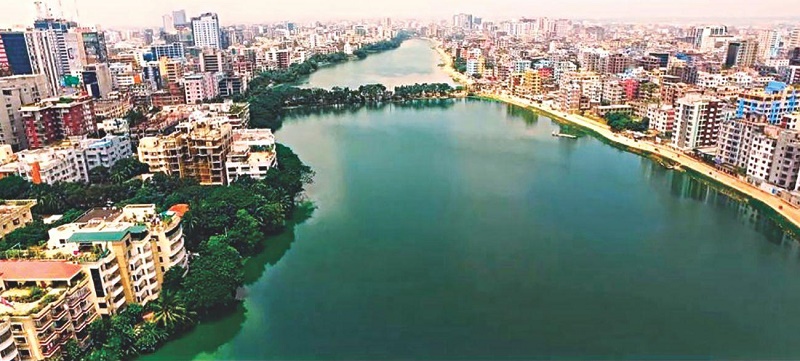
Tourist attractions in Dhaka, the capital city of Bangladesh, is a thriving, delightful and overcrowded metropolis of about
18 million people. This biggest city is the center of couture and economy of Bangladesh. A casual
visitor can be overwhelmed at the first sight of this gloriously chaotic and noisy place but once he
ride into the back of one of its innumerable colorful cycle rickshaws, he will surely feel the true charm
of this city. The old part of the town or Old Dhaka has a wide range of architectural heritage of
Mughal and Colonial period. For myriad mosques, it’s called the city of mosques. Its mosque and
temple represents its spiritual side and the modernization and development of the city in last couple
of decades give a glimpse of the direction of future travel.
If you are a photographer, this city is a
paradise for you. You will find numerous subjects here to shoot. As it was the center of the liberation
movements of Bangladesh, this city houses some important national monuments and structures. If
you want to visit Dhaka and experience the true charm of this colorful city, here is a list of 10 places
that you must visit in Dhaka.
Ahsan Manzil
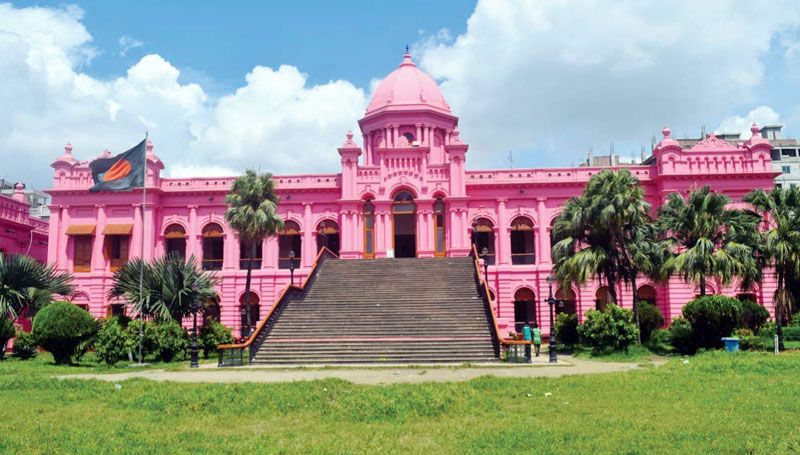
Once the official residential palace of the Nawabs of Dhaka, now Ahsan Manzil or the Pink Palace is a museum and one of the most Tourist attractions in Dhaka The 5.5 acre premise of this palace bears the significance as an architectural reminder of the elite life of the Nawabs of Dhaka during the colonial era of 19th and early 20th century.
In 1872, the patriarch of the Nawab family, Abdul Ghani (1813-1896), constructed the family’s official residence on the bank of the River Buriganga in old Dhaka and named the palace after his son Nawab Khwaja Ahsanullah (1846-1901). It’s mostly European styled building mixed with some decorative Indian motifs. Its soaring dome appears to be more about impressing the viewer on the exterior, rather than within the interior. Many important persons of the Colonial period either visited or stayed here. Viceroy Lord Nathaniel Curzon was one of them.
Ahsan Manzil History
He stayed here as a guest of Nawab Salimullah Bahadur in 1904. In 1906 Muslim leaders from all over India congregated at the Durbar Hall of Ahsan Manzil for the 20th Session of the All India Mohammedan Educational Conference in Dhaka. In the same year here the All India Muslim League was formed that later lead the creation of Pakistan-when , the British left the Indian subcontinent in 1947. 16 years after its
However, the poor descendants of the Nawab family and the poor local people continued to hold the palace until the 1970s. They inflicted much harm to the building by indiscriminately altering its configuration. In 1985 the Government of Bangladesh acquired the property and after much deliberation decided to convert it into a national museum. The preservation work completed in 1989 and Ahsan Manzil started it a journey as a museum in 1992.
Lalbag Fort:
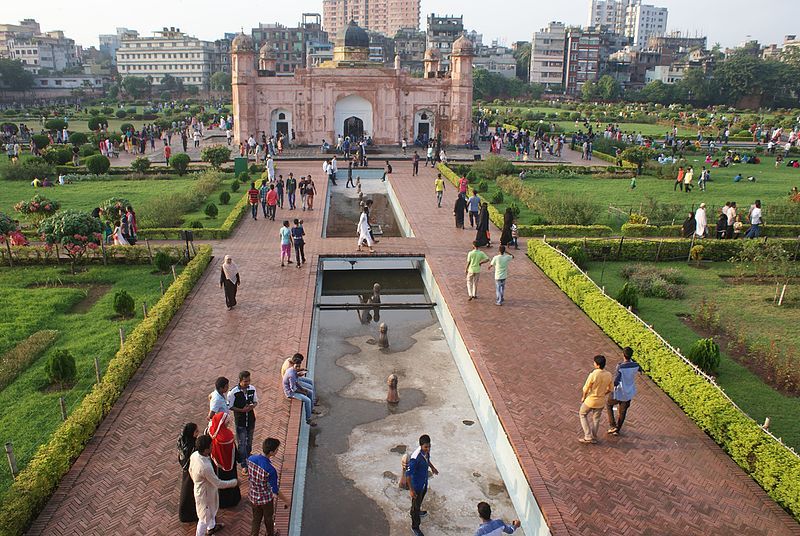
This 17th century incomplete Mughal fort is the most popular and renowned one and bears a great significance of art by Mughal Empire in Bangladesh. It stands proudly before the Buriganga River in the southwestern part of the old city. In 1678 a Mughal prince Muhammad Azam started the fort’s construction work during his vice royalty in Bangladesh. But the construction work remained incomplete when he was called back by his father Aurangazeb to the capital Delhi. His son Shaista Khan did not complete the fort though he stayed here up to 1688. In 1684 his daughter Pari Bibi died. After her death, he started thinking the fort ominous and left the structure incomplete. There are several structures in the fort area:
The Mosque
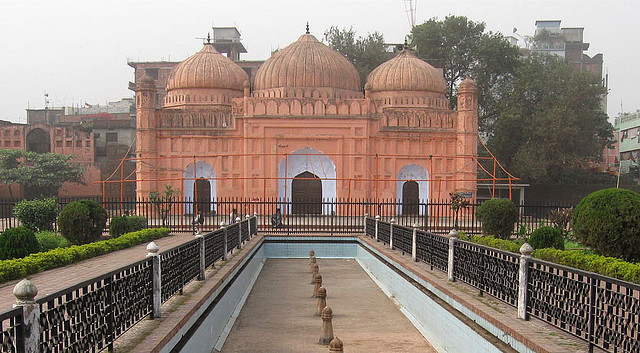
This mosque is located in the western part of the fort premise, by the side of the tomb of Pari Bibi. The Lalbagh Fort mosque is a typical Bengali Mughal type, a rectangular structure embellished with three domes, where the middle dome is larger. The mosque is still in use.
The tomb of Pari Bibi
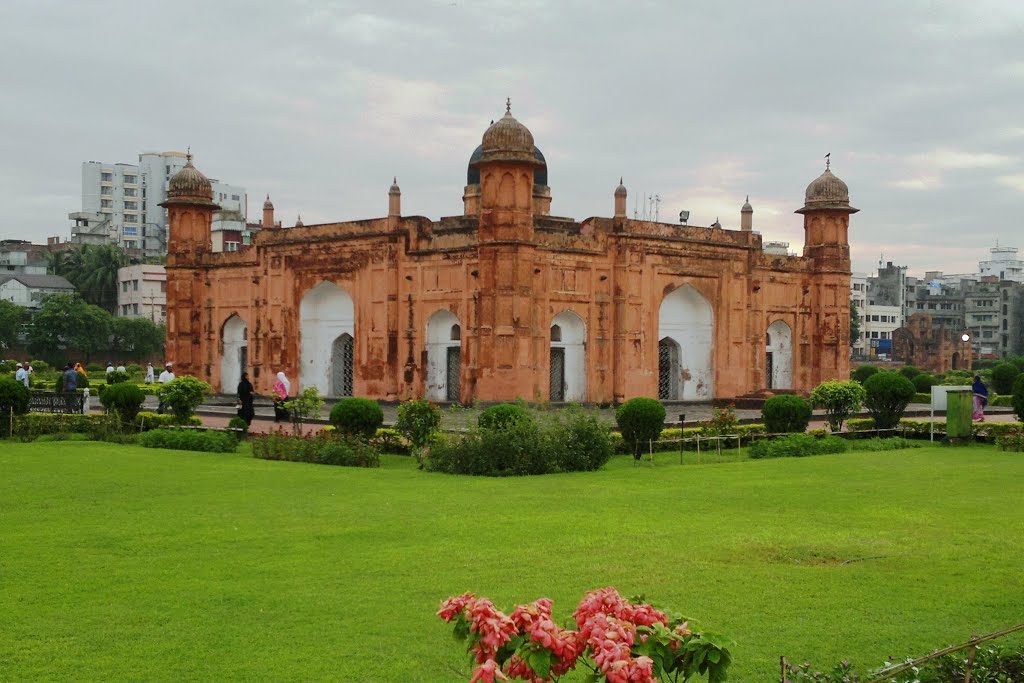
Pari Bibi’s mausoleum is the most important architecture of the Mughal structures inside the fort for its uniqueness. To decorate its interior, black basalt from Rajmahal Hills, white marble from Rajputana and colorful encaustic tiles have been used. It’s roof is covered by a false copped dome and crowned by a tall finial. The sanctum of the mausoleum is separated into nine chambers. According to its construction the tomb of Pari Bibi assimilates the more ambitious tomb of Humayun at Delhi.
The Residence of the Governor:
The residence of the governor Shaista Khan is a two storied building and it contains the Audience Hall and the Hammam. There is an engrossed ornamental fountain in the middle of the central hall. The bathing room is covered by a dome which originally had an opening in it for light and ventilation. There is a masonry tank which contained temperate water for bathing.
Secret Tunnels in Lalbag Fort:
There are several secret tunnels in Lalbagh Fort. Two of them were used to reach the now ruined Zinzira Fort of the Mughals located on the other side of the Buriganga. Others were built as mazes so that attackers and intruders of the fort lose their way and starved to death. During the British rule, many mutant soldiers of the Sipahi Revolution and also many British soldiers died here. Later these secret tunnels have been sealed permanently.
Dhakeshwari National Temple
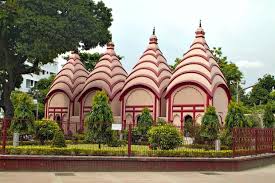
Dhakeshwari Temple is a state owned Hindu temple in Dhaka. The name Dhakeshwari means “Goddess of Dhaka”. This ‘National Temple’ was built by one Mangat Ray who was also known as Ballalsena, younger brother of Arakanese king Shrisudharma, son of famous Arakanese king Raja Malhana, alias Husen Shah. Though the present edifice is modern in construction, there has been a temple on this same spot for nine centuries. The original statue was 800 years old but it was vandalized by the Pakistani soldiers during the liberation war in 1971. As the temple complex has undergone repairs, renovation and rebuilding several times in its long years of existence, its present condition does not clearly indicate any of its original architectural sign.
Tourist Attractions in Bangladesh
There are four same sized tiny temples standing one after another from east to west. Facing south the main temple is to the north of the nat-mandir. The main temple is a three-roomed structure. The temple remains open every day and spectators can enter inside. It remains closed only in the afternoon from 02.00 pm to 04.00 pm. As it’s a sacred place for Hindus, leave your shoes outside at the time of entering the temple. Do not touch anyone or anything belongs to the temple. Every year in September, the temple and its surrounding areas become crowded with thousands of devotees for Durga Puja. Especially that’s the time to visit here to have a colorful and joyful time to spend.
National Parliament House:
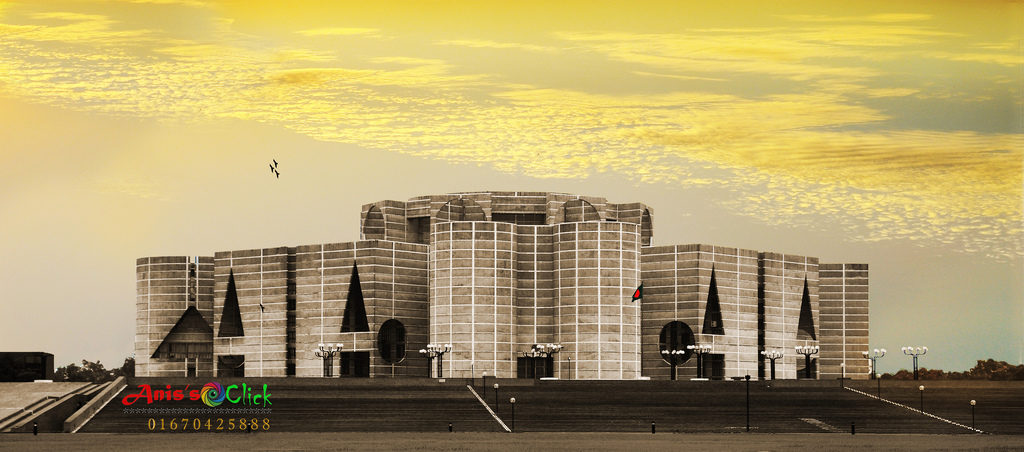
Designed by famous architect Louis I Kahn, National Parliament house of Bangladesh is one of the twentieth century’s most significant buildings. Located at Sher-e Bangla Nagar, this building is the largest legislative complex in the world. The construction work of Bangladesh National Parliament commenced in 1964 but halted due to the liberation war and it was finally completed in 1982.
The total complex is divided into three parts: The Main Plaza, the South Plaza, and the Presidential Plaza. The main building is at the middle of the complex. The MP hostel is located at the outer part of the complex. A beautifully designed artificial lake surrounds the main building. The North of complex, across the Lake Road, has intricately designed lake called Crescent Lake and there is a monument of late president Ziaur Rahman. The two complexes together attract the attention of the tourists. The complex is very popular among joggers and skaters Tourist attractions in Dhaka.
National Zoo:
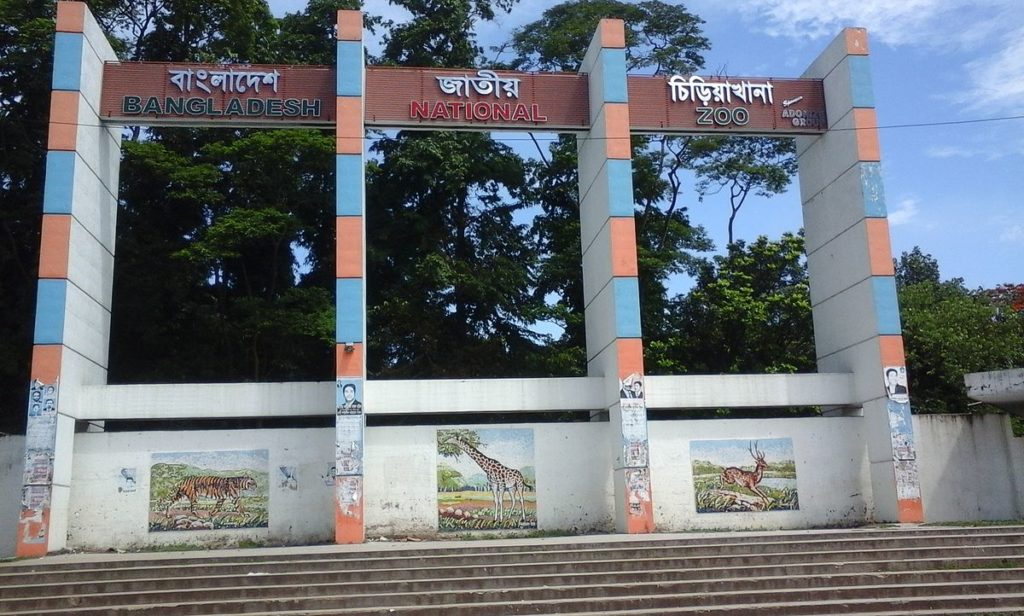
Located at Mirpur in Dhaka, Bangladesh National Zoo is one of the key attractions among the Tourist attractions in Dhaka and the local people. The zoo houses more than 2,000 animals of 165 species. It was established in 1974 over 75.53 hectors of land. About 10,000 spectators visit The National Zoo daily and the number increases in the weekends and holidays.
Among the animals, the key attraction is the Royal Bengal Tiger. It has a good collection of birds, animals, and wildlife of both local and foreign origin. There are different types of animals including Lions, elephants, cheetahs, rhinos, zebras, deer, giraffes, black bear, hippos as well as many species of monkeys, chimpanzees, baboons etc. There are several bird shades in the zoo. Here you will find different types of local and foreign birds.
Tourist Attractions in Jaflong
There are two lakes in the zoo: The south lake and the north lake. They enhance the natural beauty of the National Zoo. In winter you can see migratory birds here. There are fishing facilities on the zoo lake. For fishing you have to bring your own hook.
There is a two-storied museum located at the southwest corner of the zoo. Here you will see rare birds and animals preserved by stuffing or in the jar dripped in formalin. There are
National Botanical Garden:
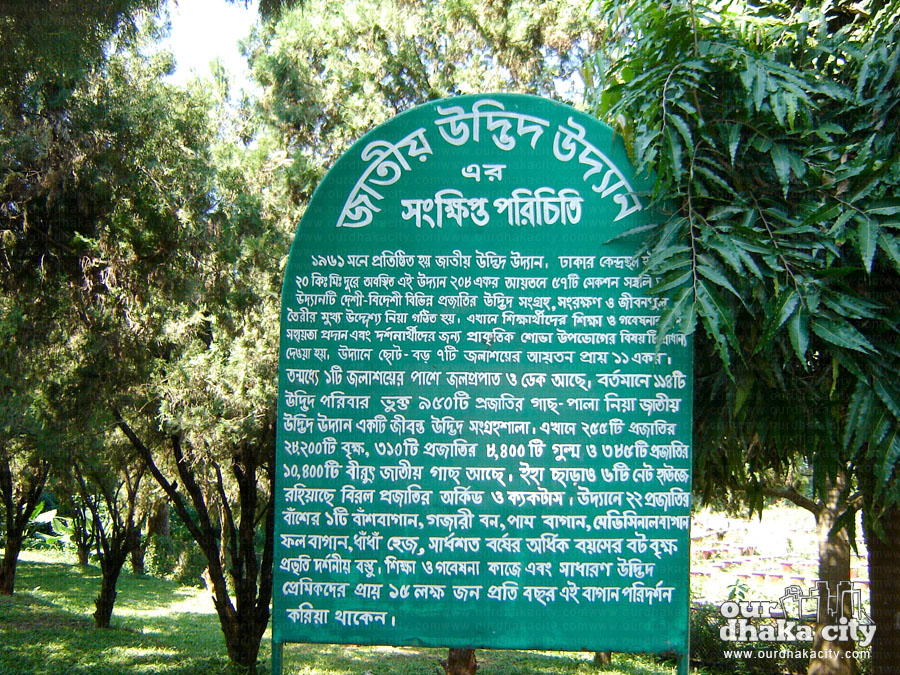
Situated at Mirpur in Dhaka beside the Dhaka Zoo, The National Botanical Garden is the largest plant conservation center in Bangladesh. Established in 1961 over an area of about 84 hectors it is a must visiting place for nature lovers and botanists. Divided in 57 sections, this place has a collection of approximately 100 species of local and foreign plants. Hundreds of varieties of roses, multiple types of bamboo in the bamboo groves, the sandal wood and old banyan trees are the key attractions. There is a cactus house, lily ponds, six lakes, two nurseries, an orchid house, a tissue culture research center, and a lotus pond with extensive visitor facilities.
Star Mosque:
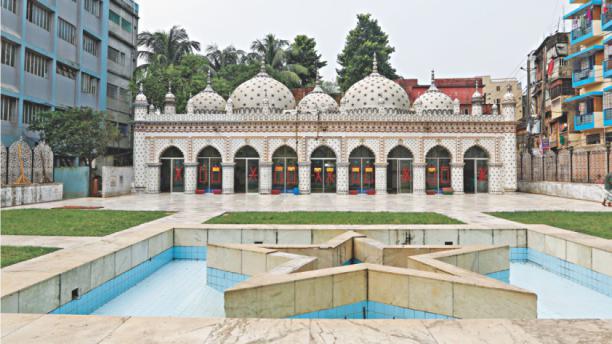
Located at Armanitola in old Dhaka, decorated with engraved floral and star patterns, Star mosque or Tara Masjid is one of the most famous tourist attractions in Bangladesh. It has ornate designs and it is decorated with motifs of blue stars. This beautiful building was built in the first half of the 19th century by Mirza Golam Pir. Unlike other Mughal architectures, there is no inscription found in the mosque mentioning its founding year. According to some people, this mosque was built in 1711. Tara Mosque is one of the few edifices in this subcontinent which has such expanded special type of china clay mosaic works, traditionally called Chini Tikri.
At first, it was a small three domed mosque. Its walls were not decorated. In 1926, Ali Jaan Bepari, a wealthy merchant at Armanitola residential area wanted to renovate the mosque. He imported china clay tiles from Japan and England and decorated the entire mosque walls and even domes with nice floral and star-shaped patterns of China clay tiles. In the white marble background, the glistening engraved stars and floral pattern create an enchanting and serene environment of light and shade in the mosque as they mirror sunlight in different angles.
Tourist attractions in Dhaka
During this renovation work, the artisans carefully preserved the original design of the mosque and only ornamented the existing structure. All over the mosque, the motif of stars is decorated and so the mosque got its name, the Star Mosque. In 1987, in the name of beautification of this archaeological site, the then government’s archaeological department extended the prayer hall and included two more domes, damaging its original historic structure. After all these the Star Mosque is a magnificent piece of work. Even the local residents of the area often stop for a while to have a look and be amazed by its perpetual beauty Tourist attractions in Dhaka
National Memorial at Savar:
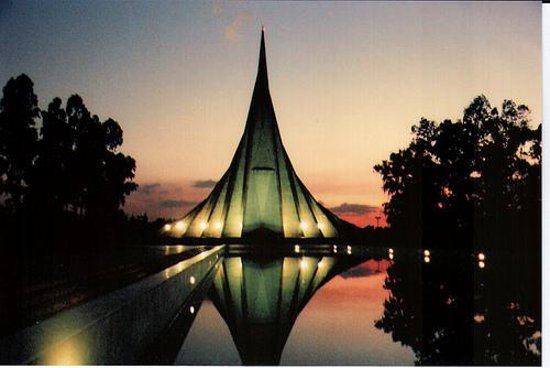
National Martyrs Memorial or Jatiyo Sriti Shoudho is the national monument of Bangladesh, erected as an iconic structure in the memory of those.
valiant sons and daughters who laid down their lives in the Liberation war of 1971. This monument is situated at Savar, about 35km northwest of Dhaka. Architect Moinul Hossain designed the monument. The whole complex area is of about 84 acres which are surrounded by a green belt of about 24.7 acres. Some mass graves and a water body is located in front of the monument.
From the main entrance, visitors get a strong axial view of this structure. To reach to it one has to cross jagged and uneven path and a manmade lake by a bridge which symbolizes the nation’s difficult path to independence and the troublesome journey lies ahead. Visitors can watch this monument from different perspectives and one can enjoy its dramatically differing configurations depending on the viewing location. From the front, the monument appears to be a single structure but in reality, it is composed of seven standing isosceles triangular concrete plates.
National Memorial :
Each of these plates varies in size and height from others. The highest plate has the smaller base and the broadest base has the lowest height. These plates are folded in the center at a 90-degree angle and this unique configuration helps this structure to change its configuration when viewed from different angles. This wonderful structure tells the story of a nation’s journey to independence. For its amazingly choreographed architecture, it is considered to be one of the finest monuments in the world.
Sonargaon:

Sonargaon or The village of gold was the old capital of Bengal in the medieval period and Tourist attractions in Dhaka. It was a significant administrative and business center at that time. During the medieval period, it was the mint capital. From the 13th century, Sonargaon was used as the capital city by different rulers of eastern Bengal. In the mid-13th century, it was the capital of Hindu Deva dynasty. But after a short time, Muslim rulers acquired it and made it their capital city. First, it was ruled by independent rulers and then it became a subsidiary capital of the Bengal Sultanate and then Delhi Sultanate.
Then it was acquired by the Mughals. It lost its pride of being the capital in 1610 when the Mughals shifted the capital of Bengal to Jahangirnagar which was later named Dhaka. During the British period, wealthy Hindu merchants settled a new neighborhood named Panam city near Sonargaon. Most of the Hindu and Mughal structures are ruined but some of the structures built in the British period are still present today. Very little trace of the original capital now remains in Sonargaon. Now, most of the Tourist attractions in Dhaka visit Sonargaon to see Panam Nagar, A decaying street with some decayed edifices by wealthy Hindu merchants and Sardar Bari a beautifully renovated king’s palace with a gorgeous pond and amazing folk-art museum.

